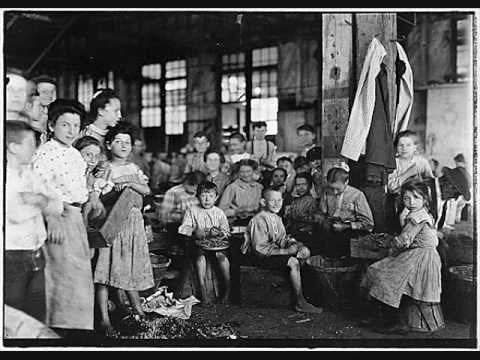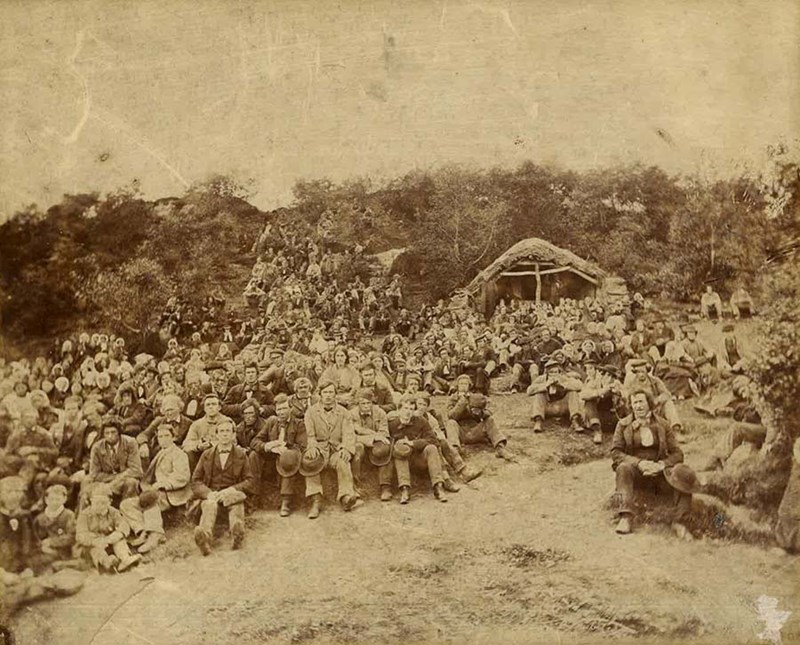
A Tale of Two Outings
Thornie
Added on 20 May 2025
The railway fever that swept Great Britain in the 1840s democratised travel.
Families, couples, clubs and societies quickly responded to the opportunity to get away, well away from wherever they were. Just to be somewhere other. At least for an afternoon, when for many it was still a five and a half day working week. If you lived in a big city, you got out to the country or to the seaside. If you lived by the sea or in a small town with nothing more than a harbour you went inland. Often that would be to Perth. Where the ‘touring season’, was already well established by the late 1840s. One August day in 1849, for example, the Midland, Edinburgh, and Northern railways almost simultaneously poured “a living deluge” of visitors into the city. Equal to the population of a small town was one, slightly, hyperbolic comment. The Midland train down from Montrose had twenty-two carriages drawn by three engines. (Similar to the one at the top of the story.) Two trains from the south had between them 32 carriages.
Meanwhile, Dunkeld’s visitor traffic amounted to twelve coaches, a day.
That changed from the summer of 1856 with the opening of the Perth & Dunkeld Railway. Folk flooded up the line from Perth on Saturdays to wander around Birnam and Dunkeld, along the banks of the Tay, and up into the hills (Craig -y-Barns on one side, Craigvinean on the other). All of this passed Murthly by; excursions were for the end of the line where there were shops, tea rooms, hotels and public houses.
But on Thursday 22nd May 1858 Murthly lost its cherry. Actually, the inhabitants of Gellyburn were the ones to feel the effect. Murthly didn’t then exist as we shall see.
Sir William Drummond Stewart graciously acceded to a request to host The Annual Juvenile Pleasure Excursion of the Perthshire Total Abstinence Society and open the grounds around Murthly Castle to allow them to celebrate the Queen’s birthday. Upwards of a thousand young people along with several hundred adults and two marching bands boarded a train in Perth for the half hour trip to Caputh Station. (Sir William had yet to win the argument with the P&DR directors as to its name. In fairness to the directors, Caputh at least was a village. Whereas ‘Murthly’ was then not even a work in progress. Its only inhabitants were the stationmaster and family, and William Strathern and his family in the inn out on the old turnpike road.)
Around half-past midday the temperance yoof of Perth assembled behind their bands and set off for the Castle. Doubtless, the inhabitants of Gellyburn had never heard the like. The noisiest traffic they saw along the road was the occasional flock of sheep heading for the ferry. Nor had they experienced such a quantity of youthful excess. For as the procession passed a May-flower tree outside one of the cottages several lads – not mere boys, but young men – stripped it of all blossom. On reaching the wide lawn in front of the New Castle (the Palace as they called it) they were served cookies and gingerbread. A stall supplied ginger beer, at twopence the bottle, with no spirituous admixture, of course. Sir William had provided a rare summer delicacy in the shape of a cartload of ice to cool the drinks. (And Murthly History Group is still researching the possible sites where ice in such quantity could have been stored.)
There was dancing on the green; swings for those who could not or would prefer not to; and the grounds were open to any and all who just wanted to wander, admiring the wooded policies. Sir William put in an appearance, cantering by, and was loudly cheered.
The scene was not entirely peaceful. Several boys and girls tore through the flower beds and shrubs and clambered up the ivy across the front of the old castle after bird nests, tearing much of it down. Matters were starting to get out of hand. To make matters worse, it began to rain. Formed up by the organisers, the party was moved off at pace for Birnam which they reached in an hour. There they split into two groups, one going on across the toll bridge into Dunkeld.
The Birnam group didn’t wander far as it was still raining. Many found their way into the hotel which Sir William had renovated at some considerable expense to coincide with the opening of the railway two years previously. It was his ambition to have Birnam Hotel known through the land, and abroad, as the finest in the Highlands. Mr Anderson, the tenant, welcomed them even though they filled and milled about his great hall and the corridors for about two hours until their return train was ready up at the station.
Some, “who had not yet finished the whole of their temperance education”, managed to get inebriated enough to attack, musically and physically, both the piano and organ in the large hall, pounding out tunes to the detriment of the instruments.
Many of those bound for Dunkeld, including one of the bands, headed straight for the first public-house across the bridge, where they proceeded to get drunk and noisily rumbunctious. Eventually rounded up, they were marched back to Birnam, where the train for Perth left at eight o’clock. A letter by Outraged of Dunkeld, an abstainer of long standing, to the Perthshire Advertiser, decried the public scandal and demanded a public explanation from the organisers. He was sure the group had been infiltrated by those just wanting a cheap day out, who were not committed to the cause. Indeed, although this may have been the first such outing to Murthly and Birnam, drunkenness and riot were not unknown in “total abstinence excursions” elsewhere.
“I trust this may be a lesson to Perth and all the other societies in future to be wary of getting up so-called ‘temperance trips’ whilst at the same time throwing them open to those, who, neither by practice nor profession, show that they have any love for the temperance cause.”
It would be several years before Murthly again hosted a big excursion.
Jute, Jam and Jesus
Early in 1862 Rev Mr Cumming, parish priest of St Andrews in Dundee, approached Sir Willliam with a request. Would Sir William, one of the most prominent Catholics in Scotland, with extensive pleasure grounds around his castle easily accessible by train, agree to his parishioners having a picnic there? He was looking for opportunities to distract his flock during the Fair holiday. Sir William readily agreed.

Such a good idea, said the priests of the adjoining parishes, St Marys and Lochee. Let’s organise an excursion so we can all go.
On the morning of Thursday 28 the August, the congregation of St Andrews boarded a train in Dundee at 6.45 and were disembarking in Murthly shortly after nine. They quickly formed up and, led by their flute band, processed to the castle, passing under a large arch of greenery at the gates bearing a banner with Sir William’s coat of arms and the motto “Cead Mille Failthe”. On either side of which were a rose, shamrock and thistle and “Welcome”. They were greeted by Rev. Mr Mackay, chaplain to Sir William, Rev. Mr Boland of Murthly and Rev. Mr Grant, Braemar, and led along the grand avenue.
An hour later, a second train arrived at the station with the congregations of St Mary’s and Lochee, accompanied by a brass band. The day was reported succinctly in the local newspapers, but the only detailed account appeared in the Glasgow Free Press (later repeated in the Catholic Telegraph).
Both parties, around 2,500 jute mill workers and their families, mostly Irish immigrants, assembled before an altar on the terrace to the southeast of the chapel of St Anthony. High Mass was then sung by Rev Mr Dunn, Arbroath, accompanied by the brass band, and a choir dressed in white with red sashes.

“High Mass in the open air is a ceremony seldom witnessed in this country, and more is the pity, for it is a service of the most imposing nature, more especially on ground where it seems nature and art had combined to form a spot for the special purpose of the holy sacrifice. . . altogether the ceremony could not but make a lasting impression.”
Rev Mr Mackay addressed the throng. Although Sir William was away on business, he had asked Mackay to welcome them on his behalf and extend the freedom of the grounds. Refreshments, enough for a hearty meal, were served out (not just jam sandwiches and ginger beer – those would come later in the day). All of it organised and purveyed across by volunteer groups from each parish. The afternoon was given over to competitive sports in which the accompanying clergy took an active part. Prizes were presented. And an Irish piper was soon the centre of a merry group of dancers. A group of volunteers worked hard to keep the children actively amused. However, trouble loomed in the background.
Some enterprising publicans in Dunkeld, having got wind of what was planned for the day, despatched several cartloads of beer and whisky. (No doubt thinking, “several thousand drouthy millworkers from Dundee in holiday mood, how can we be of assistance?”) These were intercepted at the Roman Bridge by Rev Cumming and several other priests. After a “determined remonstrance” they succeeded in turning the carts away.
The event was wound up at five o’clock precisely and the first party left for the station to catch a train at 5.30. Although the second party had to wait around until much later, and only got to Dundee shortly after 10pm, their conduct and patience were exemplary. It was left to the newspapers to report: all quiet, nothing to see here.
“(They) conducted themselves throughout the day with the utmost propriety and decorum . . . there was not the least symptom of intoxication or disorderly conduct.”
The Roman Catholic excursion to Murthly from St Andrews (Dundee) and Lochee, “Little Tipperary”, became an annual event for the rest of the decade. It seems always to have been well organised and peaceable, if noisy.